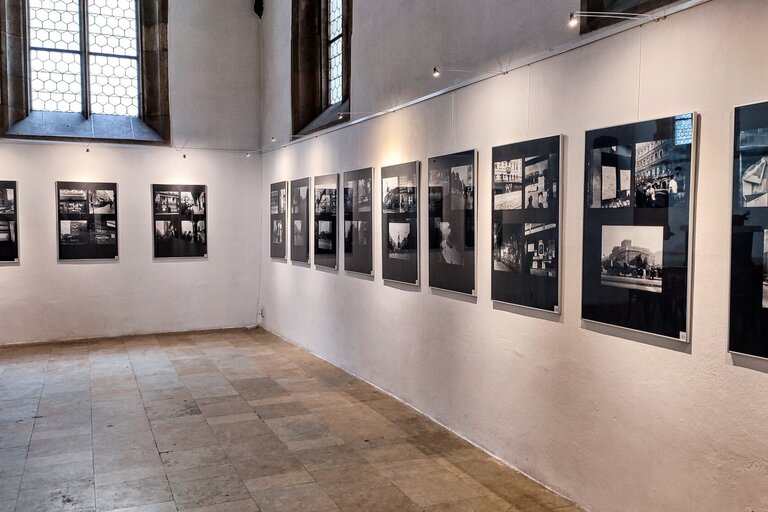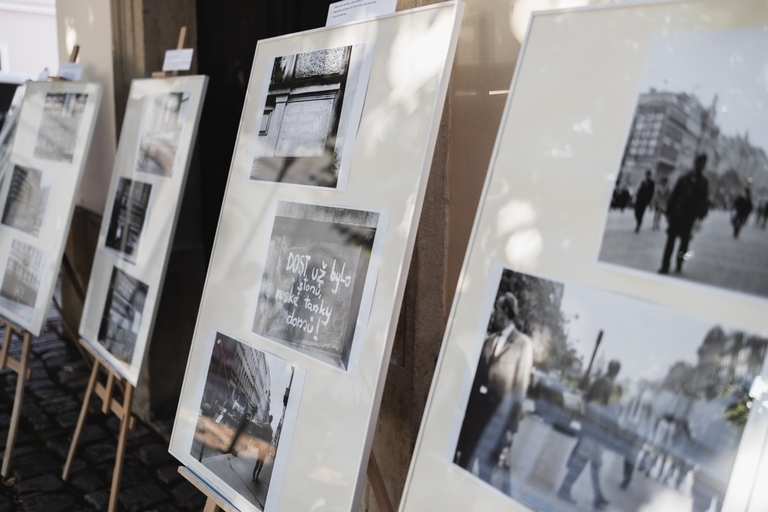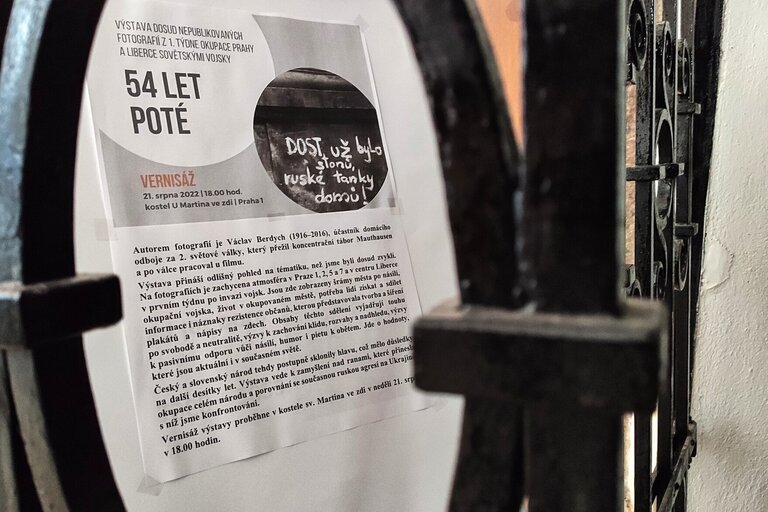An exhibition of unique photos from the Soviet occupation of Czechoslovakia in 1968
#ECCB Photographer Václav Berdych captured the atmosphere of the first week of the Soviet occupation in 1968 in Prague and Liberec. Previously unpublished images have now been obtained and put on display in the centre of Prague in the evangelical Church of St. Martin in the Wall. The opening was held on Sunday 21 August, exactly 54 years after the Soviet invasion began.

The exhibition brought a slightly different perspective on the then-August. The images do not depict any significant historical moments or important state leaders. On the contrary, they document "merely" the everyday atmosphere in the streets. The views and actions of ordinary people who meet the occupiers and deal with the event each in their own way.
The scars of the city after the violence, the occupying army, life in the occupied city, and the resistance of the citizens, represented by the creation and dissemination of posters and signs on the walls, are depicted. The content of these messages expresses a desire for freedom, calls for calm, reason, and perspective, calls for passive resistance to violence, humour, and remembrance of the victims.
These are values that are still relevant in today's world. The Czech and Slovak peoples of that time bowed their heads as time passed, with consequences for decades to come. The exhibition leads us to reflect on the wounds that the occupation brought to the whole nation and to compare it with the current Russian aggression in Ukraine, with which we are confronted.
The author of the photographs is Václav Berdych (1916-2016), a participant in the resistance during World War II. In the aftermath of the assassination of the Reich Protector Reinhard Heydrich, in the autumn of 1942, he was arrested and taken to the Small Fortress of Terezín, later destined for execution and deported to the Mauthausen concentration camp. He escaped death several times, survived the concentration camp and the Grossraming satellite camp, and returned to Mauthausen after liberation to document the camp through photography. After the war, he worked in the theatre and at the Barrandov Film Studio as a director. He also worked as an artist and photographer. At the same time, he worked as president of the International Committee of the Mauthausen Concentration Camp, translated and wrote several books on his own. The images from 1968 were never published, the archive was only discovered by Berdych's family, and his grandson, Mikuláš Vymětal, an evangelical minister for minorities and humanitarian activities, was instrumental in getting them published.
Jiří Hofman


